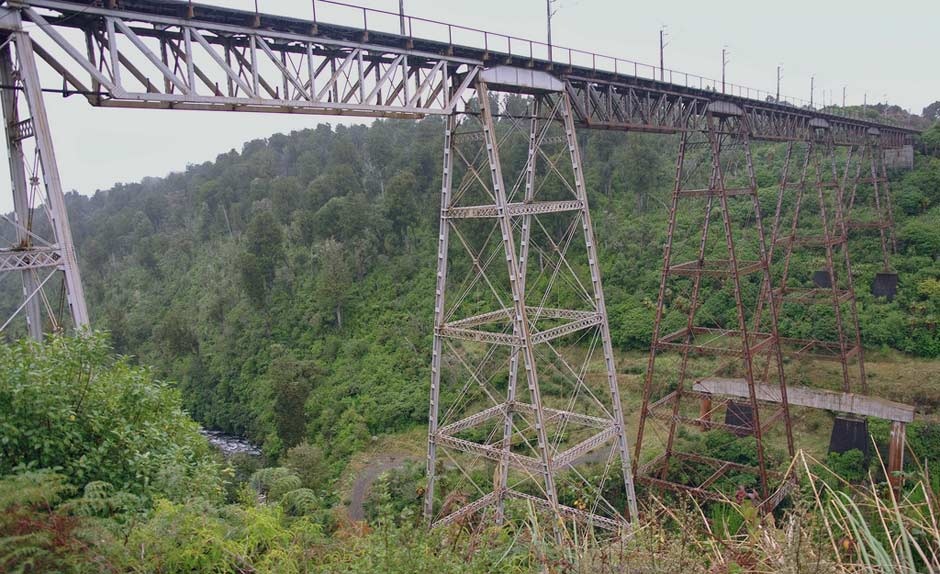
Makatote Viaduct (1908)
The main trunk unites the North Island
The South Island main trunk line linked Christchurch and Dunedin by 1878 and was extended to Invercargill the next year, but another three decades would pass before engineers and politicians could overcome the opposition of King Country Māori and the forbidding central North Island terrain to complete the northern equivalent. Until then anyone wanting to travel from Auckland to Wellington either took a steamer down the east coast or sailed from Onehunga to catch the Wellington train at New Plymouth.
Christchurch firm J. & A. Anderson won the Makatote construction tender in 1905. The site was forbidding, 792 m above sea level amid thickly forested hills. Storms, floods and shortages of cement and skilled labour made things worse. Anderson set up a fully equipped workshop and brought in 1238 tonnes of cement and 1016 tonnes of steel by wagon from the railhead. Using a cableway stretched across the gorge between timber gantries, they had the viaduct ready by July 1908. Soon trains began rolling uninterrupted between Auckland and Wellington, transforming travel in the North Island and turning the government railway into a modern main-line system. Passenger numbers soared from 3.5 million in 1895 to 13.3 million in 1913 and freight carried rose from 2 million tonnes in 1895 to almost 3.9 million tonnes in 1913.
The Makatote Viaduct is not our longest railway viaduct, but still offers some impressive statistics: it is 2262 m long and 79 m high. There are six concrete and five steel piers. Twenty-three major viaducts and 26 bridges made the North Island main trunk an impressive project by any standards. When the American Society of Civil Engineers awarded the line its 27th International Historic Civil Engineering Landmark Award in 1997, it joined the Statue of Liberty, the Eiffel Tower and the Panama Canal on a very select list. Just south of the viaduct, the Last Spike Monument marks the spot where Sir Joseph Ward drove the final spike into the line on 6 November 1908.
Further information
This site is item number 78 on the History of New Zealand in 100 Places list.
On the ground
Motorists on State Highway 4 between Pokaka and Erua can view the viaduct from a rest stop beneath the southern piers, or from the Makatote Scenic Reserve at the northern end of the viaduct.
Websites
- Heritage New Zealand List
- Engineering Heritage New Zealand
- Railways – Te Ara
- Building the Main Trunk Line - NZ History
Books
- Neill Atkinson, Trainland: how railways made New Zealand, Random House, Auckland, 2007
- Geoffrey Thornton, Bridging the gap: early bridges in New Zealand 1830-1939, Reed Books, Auckland, 2001






Community contributions